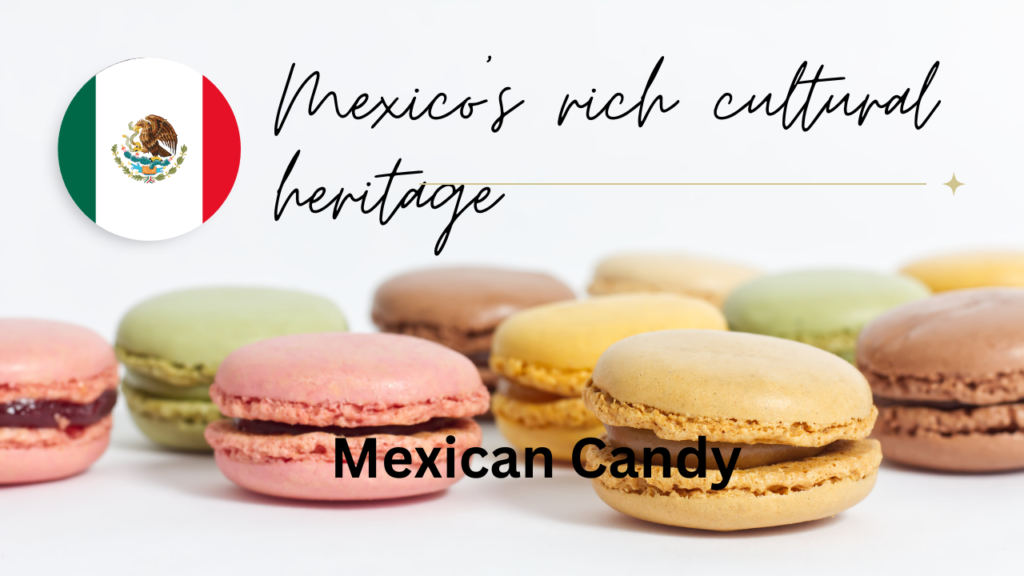Mexican candy represents a unique fusion of flavours that captures the essence of Mexico’s rich cultural heritage. Unlike any other confections worldwide, these treats blend sweet, sour, spicy, and sometimes salty flavours, offering a culinary experience that reflects the complexity of Mexico’s history and traditions. This article delves deep into the vibrant world of Mexican candy, tracing its origins, highlighting key ingredients, showcasing popular varieties, and exploring the cultural significance of these delightful sweets.
A Symphony of Flavors: The Diverse Palette of Mexican Candy
Mexican candies are renowned for their bold and complex flavour profiles, featuring a harmonious blend of sweet, sour, spicy, and sometimes salty tastes. This diversity is a reflection of Mexico’s rich culinary heritage, which values depth and complexity in its dishes and sweets alike. Key ingredients that define Mexican candy include:
Tamarind: The Tangy Staple
Tamarind’s sour-sweet flavour is a cornerstone in the realm of Mexican confections. This versatile ingredient is transformed into a plethora of candies, often enhanced with sugar, salt, and chilli, creating an addictive balance of flavours.
Chilli: The Spicy Kick
Chilli is an essential element of Mexican cuisine, and its inclusion in candy showcases the Mexican penchant for incorporating spice into their sweets. This bold addition introduces an unexpected kick to the confections, making them uniquely Mexican.
Chocolate: The Ancient Delight
Mexico is the historical birthplace of chocolate, revered by ancient civilizations as a food of the gods. Today, chocolate remains a cherished ingredient in Mexican sweets, often enriched with cinnamon and chilli, distinguishing it from its European counterparts.
Celebrated Treats: Icons of Mexican Candy
Mexican candies are celebrated for their unique blend of flavours, textures, and ingredients, reflecting the rich culinary traditions of Mexico. Within the vast assortment of Mexican candies, several varieties hold iconic status, beloved by generations for their distinctive flavours and textures:
Dulce de Leche: Creamy Caramel Indulgence
Dulce de leche is a creamy, caramel-like confection made by slowly simmering milk and sugar until it achieves a rich, thick consistency. This sweet treat is a staple in many Mexican households and is often used as a spread, filling for cakes, or simply enjoyed on its own. Its smooth texture and deep, sweet flavour make it a favourite across ages.
Tamarindo Candies: Sour Meets Spice
Tamarindo candies, made from the pulp of the tamarind fruit, are a quintessential example of the unique flavour profiles found in Mexican confections. These candies range from sweet and tangy to spicy, coated in a mixture of sugar, salt, and chilli powder. The versatility of tamarind allows for a wide variety of candies, including soft candies, hard candies, and tamarind paste, each offering a distinct taste experience
Mazapan: The Nutty Delight
Mazapan is a soft, crumbly confection made primarily from ground peanuts mixed with sugar. This simple yet delicious candy melts in your mouth, leaving a sweet, nutty flavour that’s incredibly satisfying. Mazapan is often shaped into small disks and wrapped in colourful packaging, making it a popular gift or treat for special occasions.
Chamoy Treats: A Flavor Explosion
Chamoy treats are known for their unique combination of sweet, sour, salty, and spicy flavours. Chamoy itself is a condiment made from pickled fruit, chilli peppers, lime, and salt. This flavorful mixture is often used as a coating or filling for a variety of candies, including gummies, hard candies, and fruit lollipops. Chamoy treats are beloved for their ability to offer a complex flavour journey in each bite.
More Than Just Candy: Cultural Pillars
Beyond their delightful flavours, Mexican candies serve as vibrant symbols of Mexico’s cultural identity and traditions. These confections are integral to various festivities, celebrations, and religious observances, embodying the joy, spirit, and resilience of the Mexican people. For example, during the vibrant Día de los Muertos (Day of the Dead), families craft and share sugar skulls and other sweet treats as offerings to honour and remember their deceased loved ones, illustrating the profound connection between food, culture, and the cycle of life.
Festivals and Celebrations
Mexican candies are not only enjoyed as everyday treats but also play a significant role in festivals and celebrations. They are integral to occasions like Día de los Muertos (Day of the Dead), where sweets such as sugar skulls are offered to honour the deceased.
A Symbol of Heritage
Beyond their delicious flavours, these candies serve as a symbol of Mexican heritage and tradition, passed down through generations. They are a way to connect with one’s roots and celebrate the rich history and diversity of Mexican culture.
A Global Sweet Sensation
In recent years, Mexican candy has transcended its local roots to gain international fame, captivating the palates of people across the globe. This growing popularity is a testament to the universal appeal of Mexico’s rich flavours and the increasing interest in diverse culinary experiences. From speciality stores to online platforms, Mexican candies are now more accessible than ever, inviting everyone to partake in this sweet slice of Mexican culture..
Conclusion: The Rich Legacy of Mexican Candy
In wrapping up our journey through the vibrant landscape of Mexican candy, we’ve ventured far beyond mere flavours and textures. These confections embody the rich cultural fabric of Mexico, bridging past and present, tradition and innovation. Mexican candies do more than tantalize the taste buds; they serve as a medium through which the story of Mexico is told—one sweet, spicy bite at a time. The exploration of ingredients like tamarind, chilli, and chocolate has unveiled a world where culinary artistry meets cultural heritage. These sweets are not just treats but symbols of Mexico’s history, a celebration of its diverse culinary practices influenced by ancient civilizations and colonial intermixtures.














